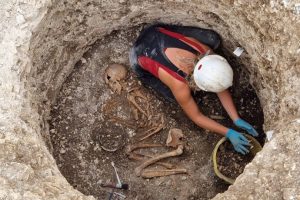A new technique allows the metabolism of embryos obtained by in vitro fertilisation to be visualised in order to decide which one has the best chance of implanting correctly in the uterus and reaching term. This is a more precise and reliable technique than traditional methods.
The new technique has been developed by the Reproductive Health Bioengineering team at the Institute of Bioengineering of Catalonia (IBEC).
The revolutionary method, called “METAPHOR”, generates 3D images revealing the colours present in the embryo in a completely non-invasive manner. Certain naturally fluorescent compounds in the embryo’s metabolism are also crucial in processes such as cellular respiration or nutrient consumption, which is why METAPHOR enables reliable observation of the embryo’s health status.
“This new technology will help increase the probability of success in assisted reproduction processes, reducing the so-called “time to pregnancy” and the economic and psychological strain on patients,” highlights Samuel Ojosnegros, principal investigator at IBEC and leader of a recent study on the new technique.
In experiments with mice, the authors of the study were able to double the success rate when selecting viable embryos compared to embryologists using traditional microscopy. In addition to embryo analysis, the method is highly accurate in analyzing oocyte metabolism, allowing the most suitable ones to be selected for in vitro fertilization. To do this, they compared oocytes from young females and from older females, since it is known that age is crucial for their viability. The METAPHOR system discriminated between young and old oocytes with 96% accuracy and was able to predict which would develop into viable embryos with more than 80% accuracy, figures unprecedented in the field.
“We are able to assess the loss of oocyte quality associated with the loss of fertility with age. We look for what are known as “molecular signatures”, characteristics of the cells associated with this loss of fertility, such as the distribution of mitochondria. From this information we are able to predict which oocytes can develop and which cannot. This would represent a major advance in the management of donations and fertility preservation,” explains Anna Seriola, senior researcher in the Ojosnegros group and co-author of the study.
3D reconstruction of hyperspectral images of mouse oocytes and embryos. (Images: IBEC)
METAPHOR’s technological foundation uses artificial intelligence methods to analyse metabolic images obtained through hyperspectral microscopy. “Using hyperspectral microscopy, we capture hundreds of images containing complex information on many mixed metabolites from embryos and oocytes. To analyse them, we have trained an artificial intelligence tool capable of analysing and classifying these images in a matter of minutes,” explains Albert Parra, researcher in the Ojosnegros group and first author of the study.
The power and safety of the new method support METAPHOR as a revolutionary tool for evaluating oocytes and embryos based on their physiology. Currently, the researchers are already adjusting this technology to evaluate human embryos, and have established a company that will bring the technology to assisted reproduction clinics in the coming years.
The study is titled “METAPHOR: Metabolic Evaluation through Phasor-based Hyperspectral Imaging and Object Recognition for Mammalian Blastocysts and Oocytes.” And it has been published in the academic journal Proceedings of the National Academy of Sciences (PNAS). (Source: IBEC)


![[Img #74852]](https://thelatestnews.world/wp-content/uploads/2025/01/New-species-and-genera-of-marine-bacteria-discovered-150x150.jpg)







![[Img #72989]](https://thelatestnews.world/wp-content/uploads/2024/07/New-technique-to-reduce-time-to-pregnancy-in-assisted-reproduction.jpg)
![[Img #74852]](https://thelatestnews.world/wp-content/uploads/2025/01/New-species-and-genera-of-marine-bacteria-discovered-300x200.jpg)


Add Comment